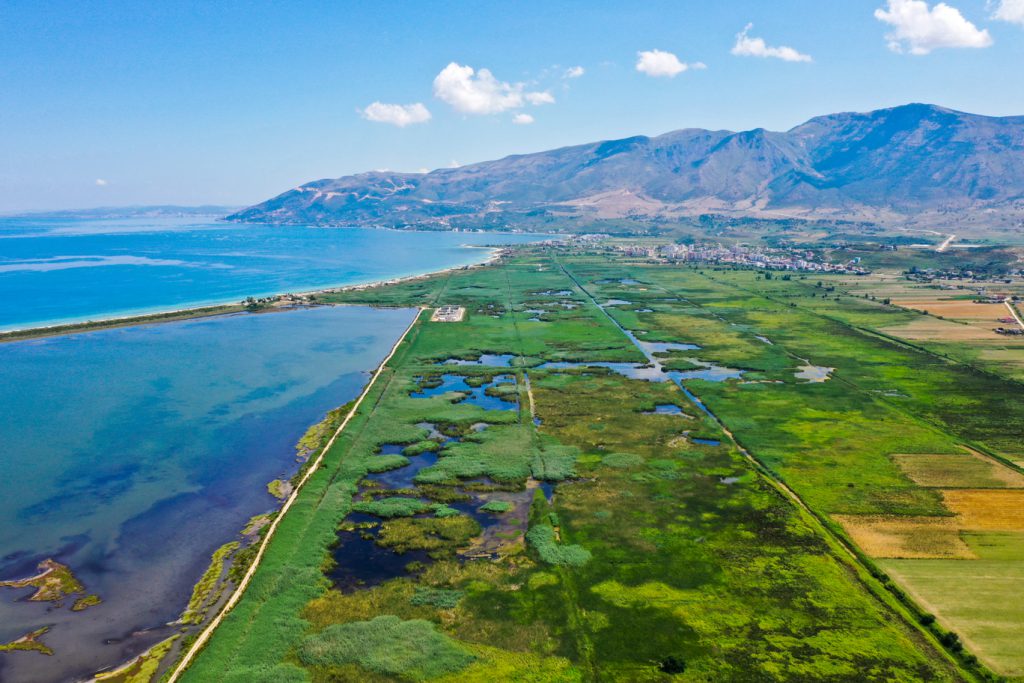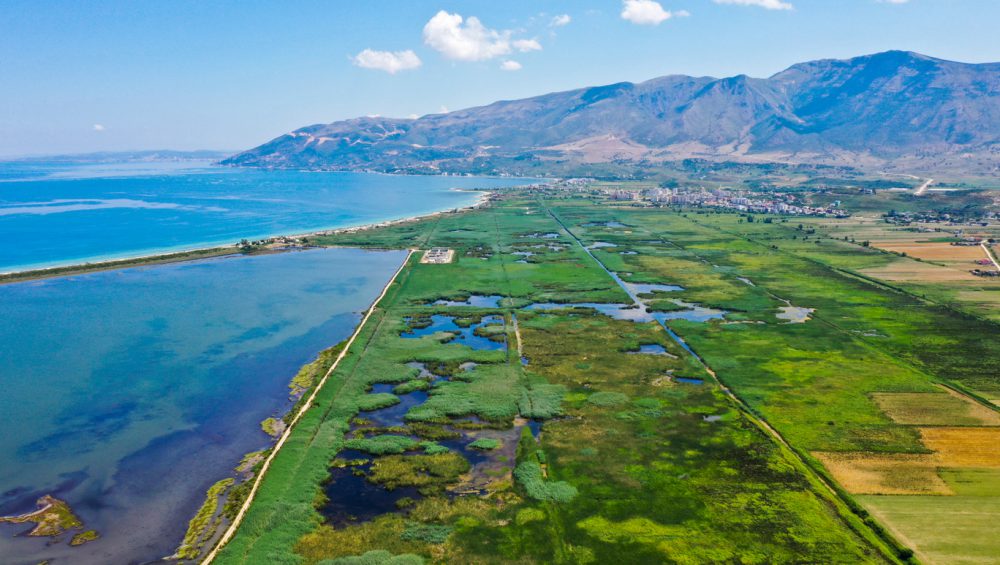Albania has significantly expanded the extension of its network of protected areas to 18% of the total land area of the country. The network dates back to the 1960s, when the first protected areas were announced, consisting mainly of small forest areas. After the 2000s, this network expanded significantly to fulfill the purpose of creating oases of nature conservation and biological diversity of the country. Today this network includes diverse ecosystems including mountainous areas covered with forests, pastures, wetlands that include lagoons, lakes, rivers, coastal waters, coastal forests, riparian forests, sand dunes, saline soils, shrubs, forests etc. Many species and habitats found in protected areas are protected by international conventions, such as European Community Directives and Albanian environmental laws.
Despite the relatively small size of Albania, the country is well known for its high diversity of ecosystems and habitats. Approximately 30% of all European floras occur in Albania. Its territory is comprised of maritime ecosystems, coastal zones, lakes, rivers, high mountain ecosystems and wetlands. Albania’s biodiversity has an important role in tourism development. However, biodiversity protection is difficult to achieve due to its complexity and habitat features.
It is worth mentioning that in recent years in Albania there have been changes in these ecosystems and consequently changes in populations of species (even extinction). Some factors that have an impact in those changes are: habitat fragmentation, water and acoustic pollution, illegal hunting, illegal plant collection, climate change, floods, droughts, forest fires. In other words, the species find it difficult to adapt to new environments and as a result their populations are significantly reduced to extinction by the lack of optimal conditions related to habitat, food or because of various diseases. Some groups are more at risk than others as their habitat is completely destroyed as a result of pollution directly related to high levels of urbanization, as well as forest fires, or illegal fishing.

In mid-2019, the Ministry of Tourism and Environment launched a comprehensive process of reviewing the national network of Protected Areas and initially proposed reducing the coastal protected areas by an average of 20%, where Vjosa-Narta landscape was reduced by 45% of the area current, Buna-Velipoja with 27%, Divjaka-Karavasta with 12% etc. The reduction of the Vjosa-Narta landscape, has paved the road for the construction of a new International Airport, an investment considered by the European Commission a complete violation of national and international legislation. The reduction of Divjaka-Karavasta and Buna-Velipoja, has paved the road for intensive agriculture and large renewable energy plants, which are associated with habitat loss and destruction of wildlife migration corridors.
The civil society group and the academic and scientific institutions of the country reacted(only in Albanian) immediately to the above plans of the government trying to convince the government not to encroach on any protected area. Civil society strongly opposes the process and results of the Review of the National Network of Protected Areas in Albania, through letters sent to the Ministry of Tourism and Environment, public awareness in media, use of social platforms and meetings with officials of the Ministry of Tourism and Environment.
Based on the report “Mapping of environmental issues along the coast in Albania” conducted by the environmental organization EcoAlbania, with the support of the Westminster Foundation for Democracy, it is noted that in Vlora county, habitat alienation amounts to 12,428 ha from 12,437.7 ha that was before changes of 2021 in the National Park of Sazan-Karaburun, while in Lezha and Durres reaches respectively the values of 8092 ha from 9393.9 ha in the Kune-Vain Lagoon. An assessment of public perception on the level of impact of habitat alienation in relation to environmental issues is estimated in Vlora with 12.5% shrinkage, while in the entire coastline with 2.5% in total.
In Lezha region, river pollution and forest fires are the two main factors that affect biodiversity. Firstly, the lack of sanitation in the villages has caused pollution in the surrounding rivers and the waste ends up later in the sea. According to the report and the discussion forums conducted with various actors from central, local institutions and civil society in Vlora, Durres and Lezha, it was emphasized that the pollution comes as a result of two factors such as lack of awareness of residents who do not throw waste in the respective bins and the rare passing of municipal trucks to collect them. Another issue is the numerous fires, which have damaged forest ecosystems and the fauna that lives in them. A third factor is the high level of urbanization or successive constructions, which cause deforestation.
Based on the report and the opinion of local actors, biodiversity damage reaches 19% in Lezha, and in Durrës reaches 20% due to urbanization. In addition, the loss of public spaces these coastal areas, also encounter the phenomenon of deforestation, the absence of firefighters in a timely manner and their low number, little cooperation between municipalities and citizens to discuss issues and suggestions.
In Vlora some factors that affect biodiversity are illegal fishing and hunting and the use of wrong hunting tools, in addition to high urbanization as happens in the case of Lezha or Durres. The perception of local actors regarding the wrong tools is evaluated with 3.5 out of 4 points, while illegal hunting with only 2.88 out of 4 points. The conclusion of the study shows that in Sazan-Karaburun National Park the loss of biodiversity is perceived by local actors a big environmental problem being quantified by 3.63 out of 4 points.
In order to have a solution to these problems, representatives of civil society also discussed with local institutions involved in biodiversity conservation. Initially, these problems are evident not due to the lack of relevant institutions but due to the low level of institutional monitoring and control. Secondly, the lack of a medium-term budget in the municipality for building effective systems for environmental protection has led to low interaction between civil society and institutions. All these problems are solved by having concrete investments by the municipalities.
Not only that, but starting from the influx of tourists who are expected to visit Albania, the municipalities of Lezha, Durres and Vlora are building management systems that address the problem of waste, illegal fishing and the destruction of biodiversity. Another innovation is the operation of the new sector of the digital police station, where every individual will have the opportunity to report environmental crimes. This is expected to have a long-term impact as each individual will be more aware of biodiversity and institutions, through reporting by citizens, will have more opportunities to identify environmental crime that is more often related to illegal fishing or alienation of habitats.







